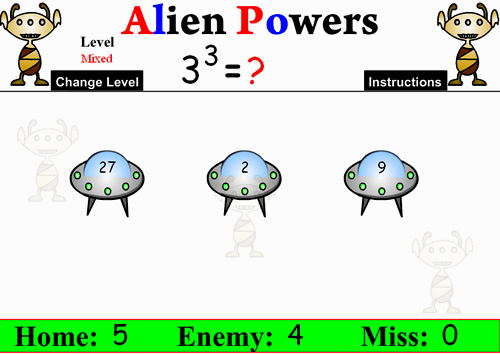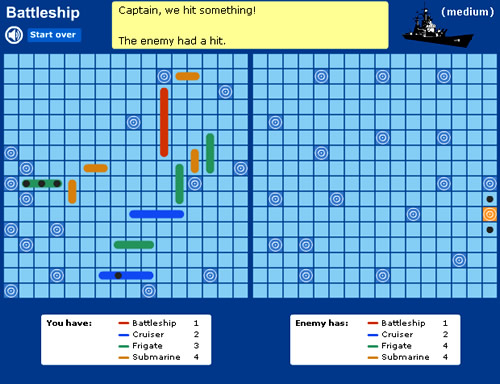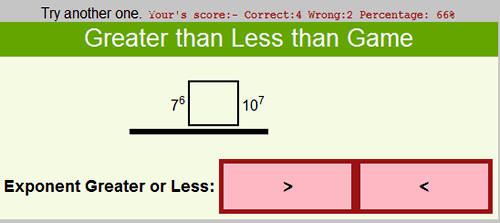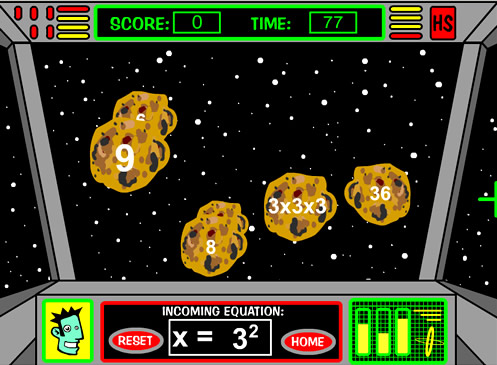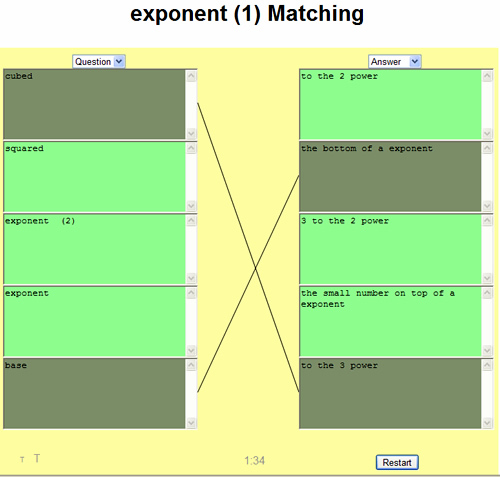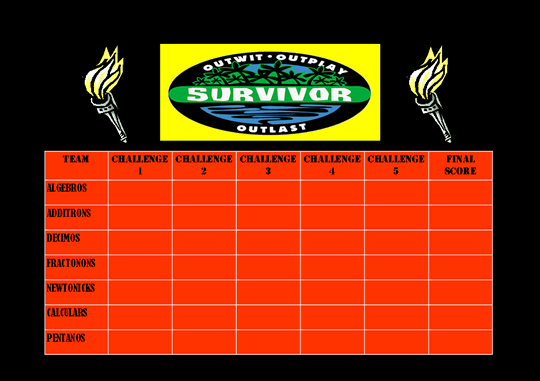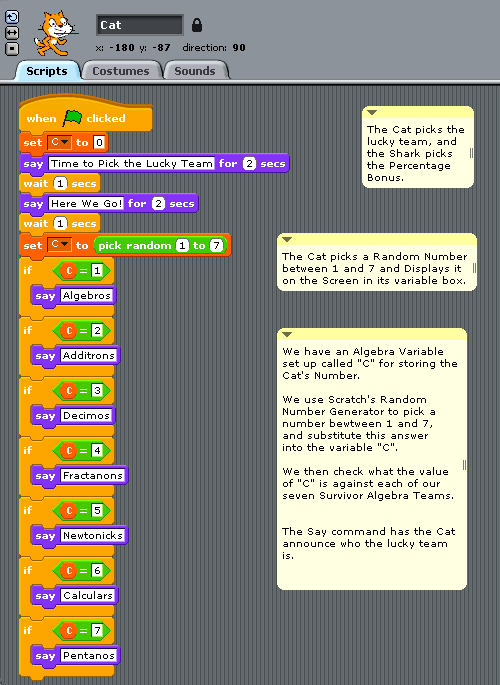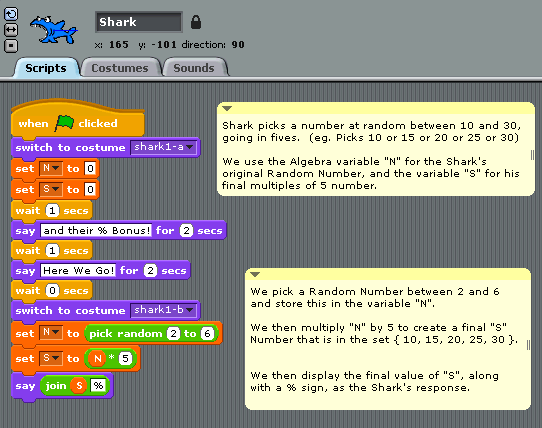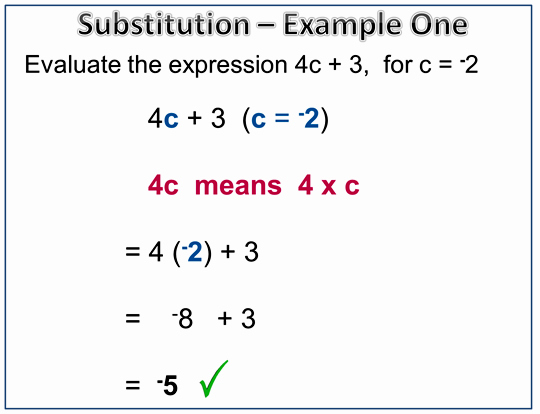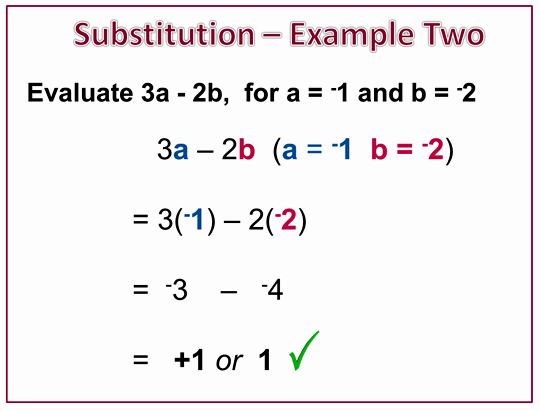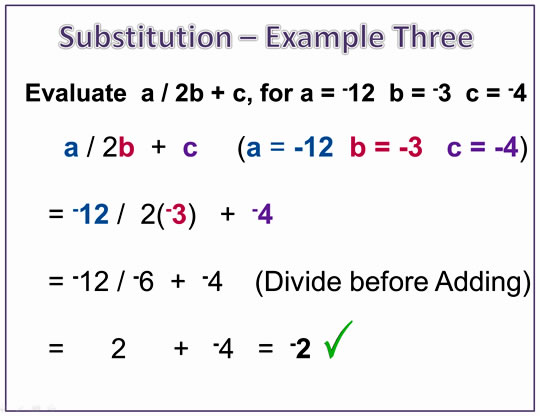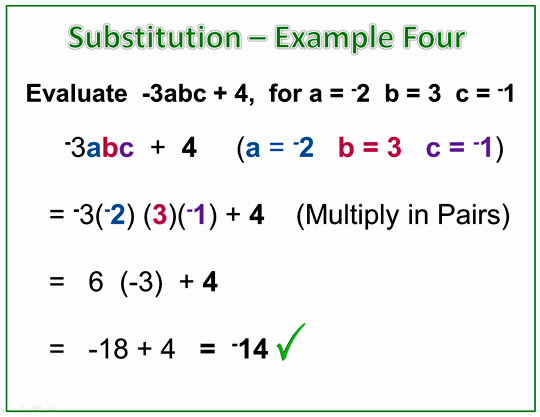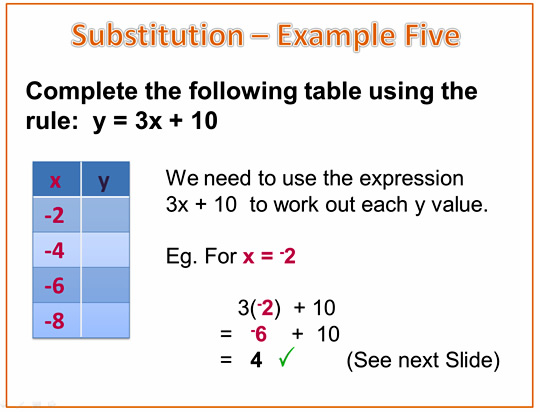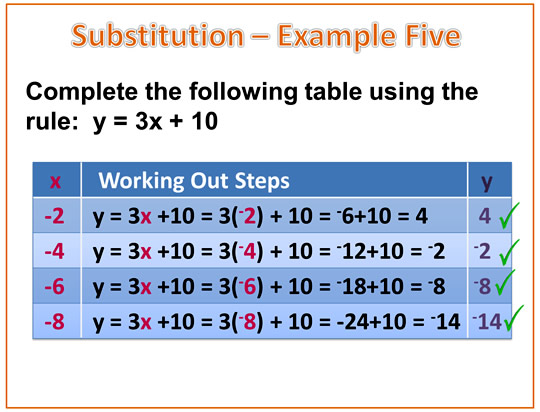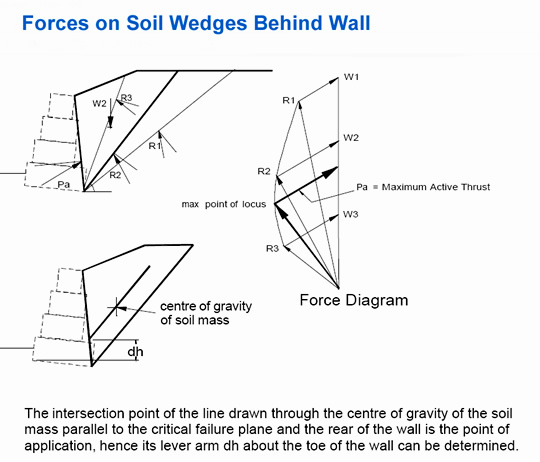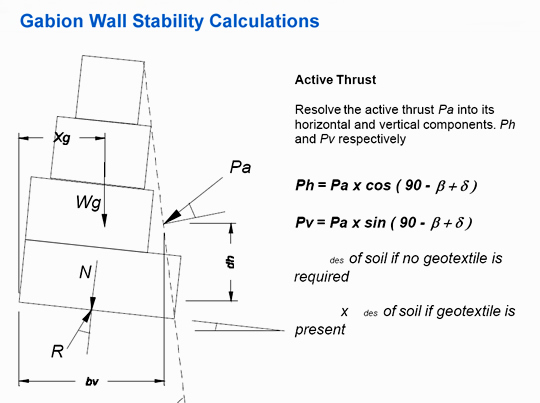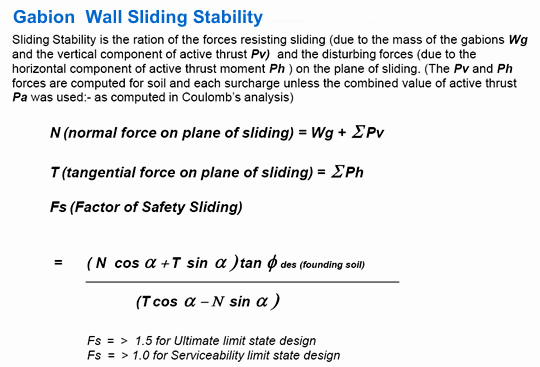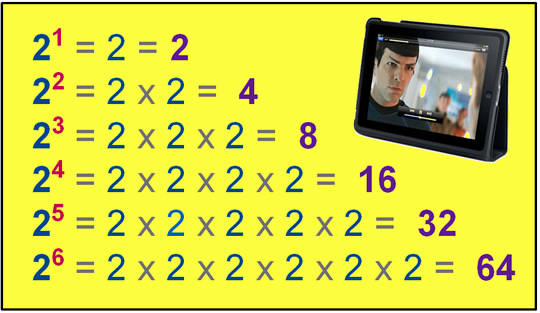
Image Source for iPad: http://www.mydigitallife.info
What do you notice about the numbers:
2, 4, 8, 16, 32, 64 ?
They are all computer memory and storage numbers, like
16 Gig, 32 Gig, 64 Gig on an iPad.
Power of 2 exponents are the basis of all computing which is done in “Binary” or base 2 numbers like these.
In this lesson we will be learning the basics of Indices, Powers, and Exponents.
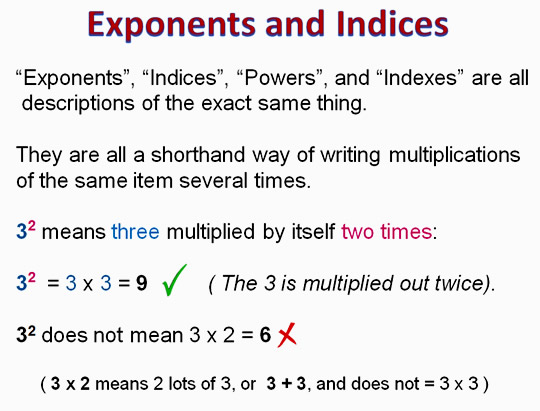
Image Copyright 2012 by Passy’s World
Here are some examples of Powers multiplication.

Image Copyright 2012 by Passy’s World
Introductory Video on Exponents
Watch the following video which goes through the basics of Powers and Indexes (Indices).
Base and Index
The main idea with Powers is that we have a normal number, and then a superscript (raised up in the air) smaller number.
These two values then combine together to create a line of multilplications that need to be done.
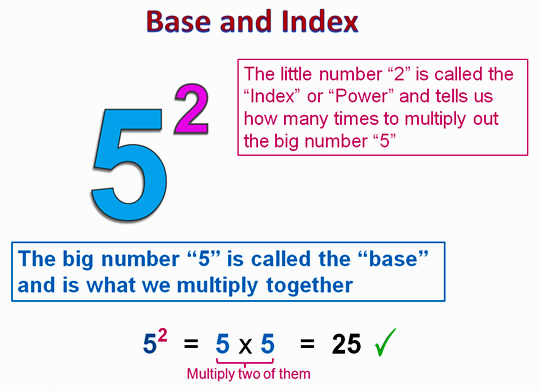
Image Copyright 2012 by Passy’s World
Squares Numbers
If we multiply a number times itself we get a “Square” number. These numbers are part of the normal times tables, and form the areas of square shapes.
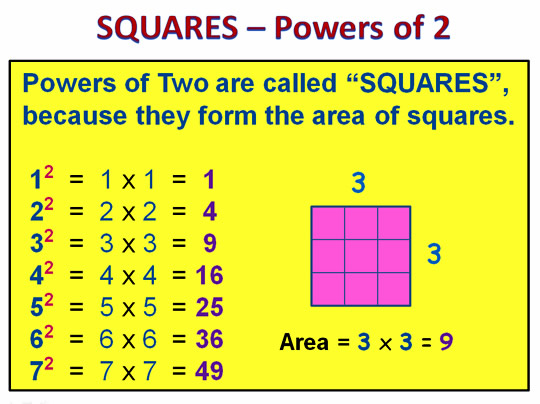
Image Copyright 2012 by Passy’s World
Cubic Numbers
If we multiply a number together three times, then we generate the volume of a cube.
These numbers are called “cube numbers” or “Cubics”.
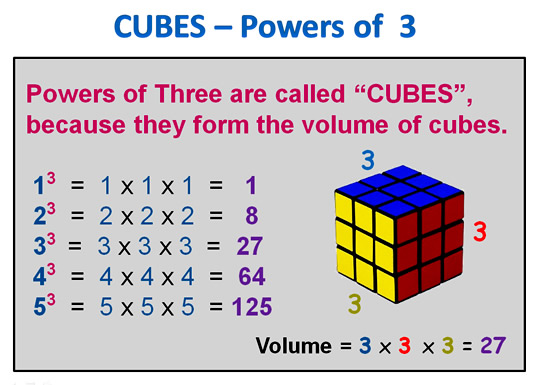
Image Copyright 2012 by Passy’s World
Index Expanded and Number Forms
There are three ways to write out Powers Terms.

Image Copyright 2012 by Passy’s World
It is important to read mathematics questions carefully, so that we understand the form in which the final answer needs to be written.
Some Examples To Try
Here are some basic Powers questions for you to try.

Image Copyright 2012 by Passy’s World
The answers to the above questions are as follows:
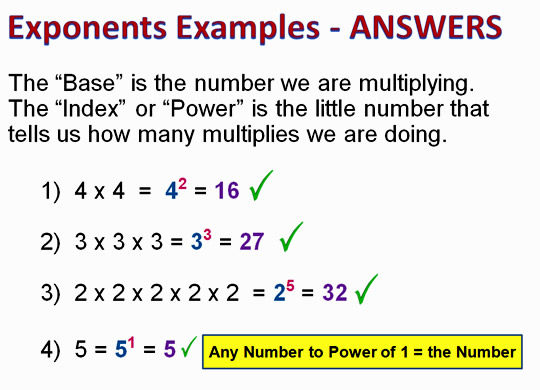
Image Copyright 2012 by Passy’s World
The Power of Zero
In the previous examples, we saw that the power of one, means we just take the base once on its own.
The Power of Zero is not so easy to understand.
However Mathematicians have used patterns to work out that any number to the power of zero always equals 1.
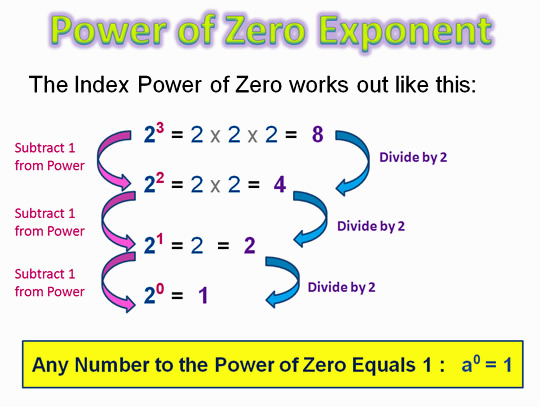
Image Copyright 2012 by Passy’s World
More Examples to Try
Here are some more Powers questions for you to try.

Image Copyright 2012 by Passy’s World
The answers to the above questions are as follows:
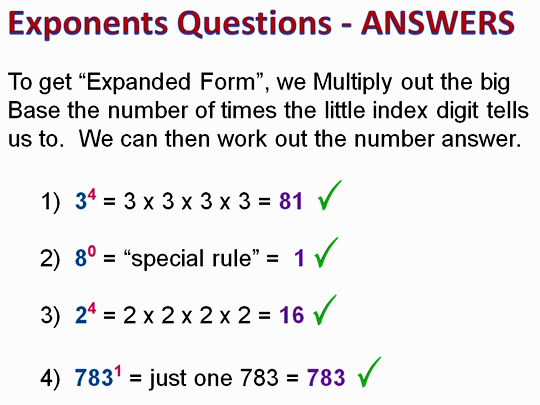
Image Copyright 2012 by Passy’s World
Algebra Powers
If we have Algebra letters instead of numbers in our question, it does not make much difference.
We still do Index Form and Expanded the Form the same way as we do for numbers.
However because we have letters, we cannot make a simplified whole number answer, so there is no “Numerical Form” for Algebra.
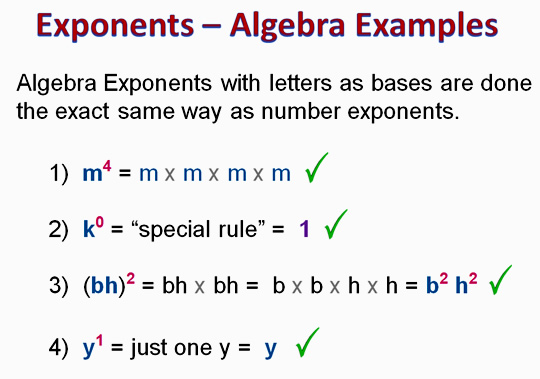
Image Copyright 2012 by Passy’s World
It is easy to start getting confused as soon as we work with Algebra.
Make sure you are very clear on the difference between the following types of Algebra Terms.
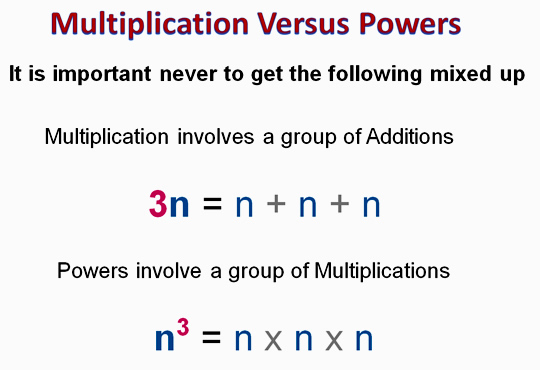
Image Copyright 2012 by Passy’s World
Interactive Online Exponents Lesson
This online activity does take a while to load in on the computer, but it is well worth the wait.
Be patient while the mostly blank screen loads the activity in.
This animated lesson on Exponents and Indices is excellent.
It goes through the basics, and even shows how to use the x to the power of y button on an interactive calculator to do powers questions.
Click the link below to do this interactive online lesson.
http://www.bbc.co.uk/schools/ks3bitesize/maths/number/powers_roots/activity.shtml
Videos About Exponents and Powers
Here is a great video by Mr Konst about Exponents.
The following video is part one of a quick general introduction to Exponent Form.
Here is the continuation part two of the previous video.
Worksheets on Exponents and Indices
Click the following links to access free worksheets on the Internet that cover basic Exponents questions.
http://www.ezschool.com/EZSheets/Algebra/Exponents/sheet14.html
http://www.ezschool.com/EZSheets/Algebra/Exponents/sheet15.html
http://www.ezschool.com/EZSheets/Algebra/Exponents/sheet6.html
http://www.mathworksheets4kids.com/exponent/find-missing-exponent-prime-base.pdf
http://www.mathworksheets4kids.com/exponent/find-missing-prime-base.pdf
Exponents Games
Try out each of these free online games to improve your exponent and powers skills.
Alien Exponents
In this game we click the spaceship which has the correct number answer on it to score each point.
If we get the question wrong, then the Alien makes it to earth and his team gets one point.
http://www.ezschool.com/Games/Exponents.html
Exponents Battleship
In this game we click on the right hand side grid to try and locate the enemy ships.
If we click where a ship is, then we are given an Exponents question to solve like this:
In this question, the ^ symbol means power.
1^4 means 1x1x1x1 and 3^1 means 3 so when we * multiply them together we have the correct answer of “3”.
Have fun playing this game by clicking the following link:
http://www.quia.com/ba/1000.html
Greater Than Less Than Game
In this game we pick and click the less than or greater than sign.
http://www.softschools.com/math/games/exponents_practice.jsp
Asteroids Game
This game is difficult at first as the screen is full of moving asteroids.
However as we get each question correct, it gets easier because there are less and less asteroids clogging up the screen.
http://www.mathdork.com/games/asteroidsexp3/asteroidsexp3.html
Exponents Matching Activity
In this activity we click on the left item, and then click on its matching right hand side item.
If we are correct, a mathcing line gets drawn. If we are incorrect, we have to try again.
http://www.studystack.com/matching-14392
Online Exponents Test
Now that we have watched all the videos, done some practice questions, and played all the games it is time to test our Basisc Exponents Skills.
Click the link below to do an exponents test online at the BBC Skillwise site.
Related Items
Algebra Expressions
Algebra Terms Coefficients variables and Constants.
Algebra Substitution Using Positive Numbers.
Algebra Substitution Using Negative Numbers.
Real World Algebra Formulas
Survivor Algebra – Class Activity
If you enjoyed this post, why not get a free subscription to our website.
You can then receive notifications of new pages directly to your email address.
Go to the subscribe area on the right hand sidebar, fill in your email address and then click the “Subscribe” button.
To find out exactly how free subscription works, click the following link:
If you would like to submit an idea for an article, or be a guest writer on our blog, then please email us at the hotmail address shown below.
If you are a subscriber to Passy’s World of Mathematics, and would like to receive a free PowerPoint version of this lesson valued at $4.99, but 100% free to you as a Subscriber, then email us at the following address:
Please state in your email that you wish to obtain the free subscriber copy of the “Basic Indices and Exponents” PowerPoint.
Feel free to link to any of our Lessons, share them on social networking sites, or use them on Learning Management Systems in Schools.
Enjoy,
Passy


